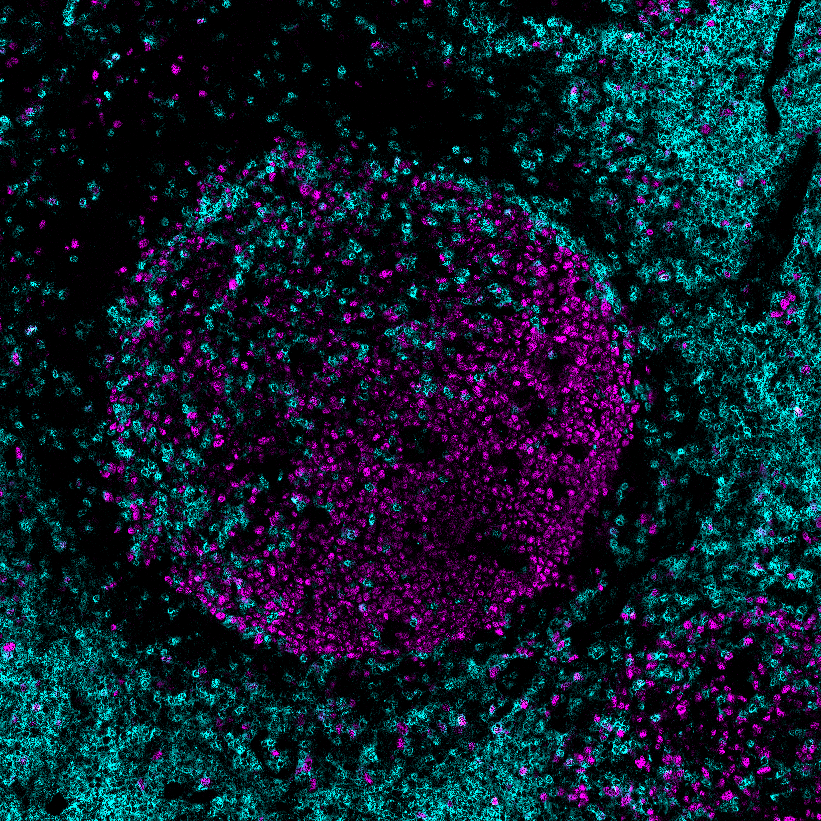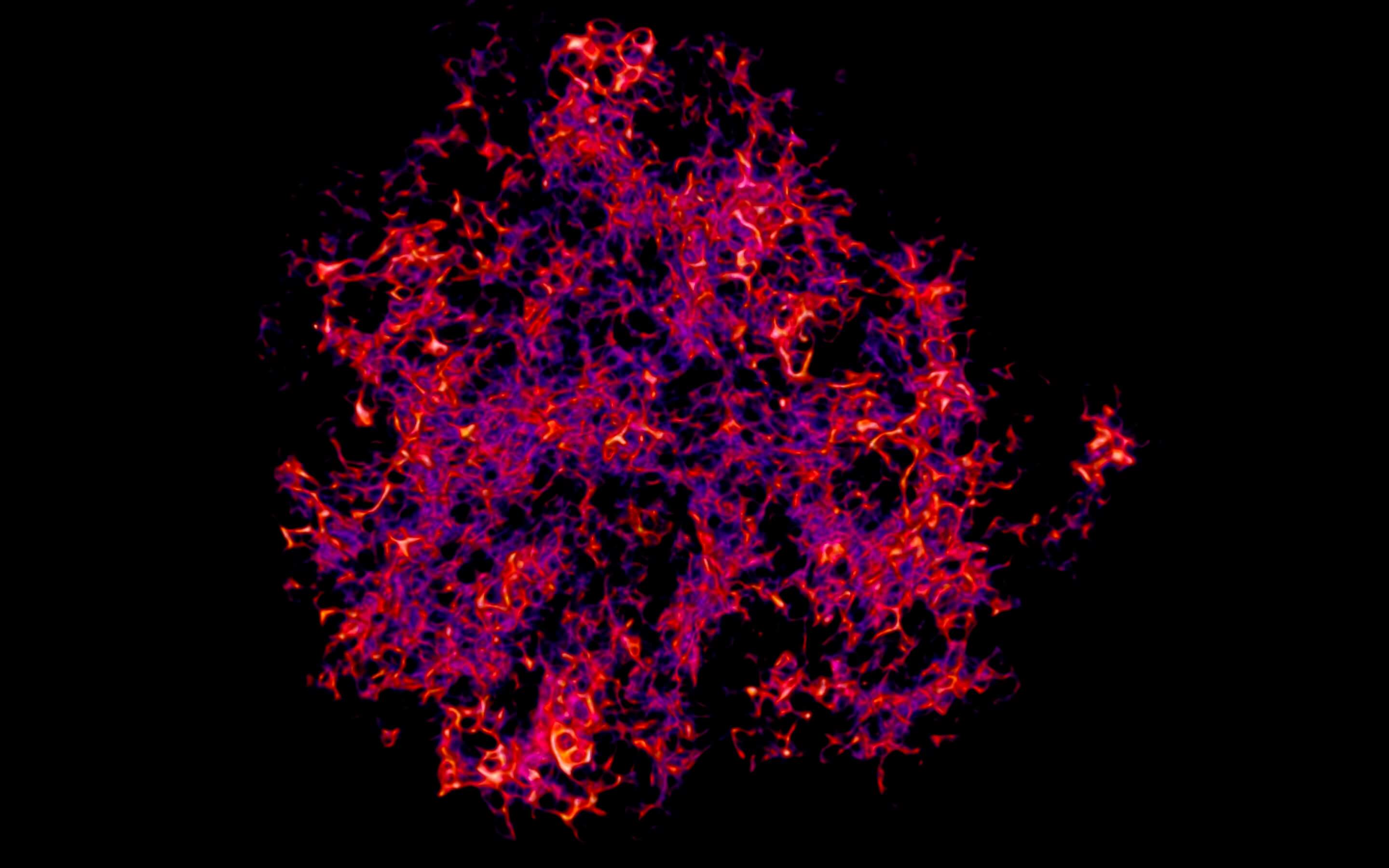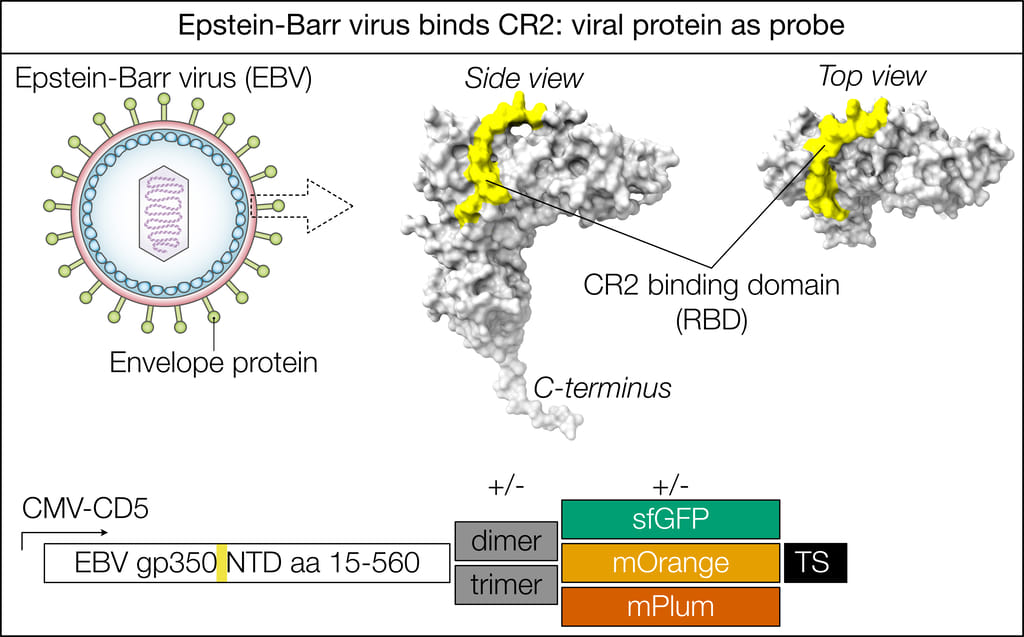Projects
Antibodies! The adaptive immune response can provide perfectly fitting antibodies for anything you can imagine, given enough time, repetitive exposure and some magic. Surprisingly, there are still many black boxes in the process of antibody generation.
Core aim:
We aim to understand the regulation and mechanism of antigen driven selection during B cell affinity maturation.
Simple is rarely easy:
High affinity antibodies are a hallmark of effective vaccination, can provide long-lasting protection and are affinity maturated in the germinal center (GC). In a birds-eye view humoral adaptive immunity is well understood, but the little unknown details are crucial to understand the difference between failure and success. Little things make big things happen.
Sweet Germinal Centers
Germinal Centers (GC) are the central hubs where B cells fine-tune the affinity of their B cell receptor (BCR, membrane bound antibody). This affinity maturation is crucial for effective antibody responses as well as memory formation. It has long been known that activated GC stain positive with peanut agglutinin (PNA), while inactive follicles do not. Additionally, *Solanum tuberosum* agglutinin (STA) stains cellular subsets in the activated GC as well. Agglutinins bind specific sugar groups, such as sialic acids and other glycans. These sugar groups specifically change during active GC formation and glycans are known to signal in immune responses. This project focusses on the effect of sugar groups on adaptive immunity. The rationale for this project stems from one of our recent papers describing the follicular dendritic cell (FDC) transcriptome by single cell RNA sequencing. FDC are stromal cells in the follicle with the capacity to regulate B and T cells. Our data revealed expression of several proteins involved in glycosylation.
Targeting follicular dendritic cells as therapy:
Antigens are retained and presented to B cells by FDCs, but for therapeutic purposes it can be useful to displace this antigen or modify its fate. An important question is if self-antigen is retained and if it contributes to undesired immune responses. In this project we investigate the role of FDCs in auto-antibody production by developing sophisticated tools to intervene in antigen fate. Retention of antigen by FDCs is mediated mainly by Complement and its receptors. However, there are more players that can determine the fate of the antigen. Fc-receptors can bind immune complexes, TLRs can be bound and this can all influence the fate of the immune complex. Interestingly, retention of proteins in endosomal compartments is partly regulated by sugar groups. Glycosylation could very well influence the shuttling of immune complexes within FDCs. Decoy complement receptors or antibodies targeting the complement binding site can be used to dissociate antigen from the FDC, but a more elegant solution might be to modify glycosylation.
Block Epstein-Barr Virus with Complement (NWO ENW XS)
The mechanism behind MS is still unclear, why is the nervous system attacked? And what attacks it? The most likely candidate is the adaptive immune system, as immunosuppressive therapies ameliorate the disease to some extent. Theoretically, there are several options, neurons could express a protein with strong similarities to a protein expressed by EBV, which causes the immune system to attack the neurons. This molecular mimicry is a classic example of mistaken identity and was recently proposed for one of the latency genes of EBV (proteins expressed during dormant infection). The (auto) antibodies and T cells that combat EBV would also combat the neurons in this case. However, in relapsing-remitting MS a subset of neurons is targeted and the disease exhibits 'flairs', periodic episodes of symptoms. This does not fit with the molecular mimicry model as you would expect these neurons to be attacked constantly. Instead, I propose that EBV causes a latent infection of neuron subsets. Periodic expression of latency genes —something that Herpes viruses such as EBV are known to do (e.g., cold sores from Herpes simplex)— would explain the flair-ups as well as the limitation to neuronal subsets. For this hypothesis neurons would need the EBV entry receptor, also known as complement receptor 2 (CR2) or simply the EBV receptor. EBV uses this receptor to enter and infect cells. B cells have high levels of CR2 and are the main target cell for EBV, which can result in mononucleosis (better known as Pfeiffer's disease in the Netherlands). CR2 is present on other cells as well, notably on follicular dendritic cells, a mesenchymal immune cell with neuronal characteristics.
Expression of EBV gp350 protein with fluorescent tags. The Epstein-Barr Virus (EBV) envelope protein gp350 contains a CR2 binding domain (RBD, receptor binding domain) on its N-terminal domain (NTD) that is crucial for infection. This NTD will be expressed as a dimer or trimer in native confirmation with a single fluorescent tag of our choice.
Proofivy:
Our collaboration with Polygon to use popular blockchain technology in science is in its infancy but will be further developed before the start of this proposal. “Proofivy's mission is to increase trust in science, journalism, and humanity. Blockchain technology provides us with new tools for verification and storing of data. Proofivy makes it easy for researchers (and anyone else), to prove the creation and possession of data before they are ready to share it, and to store and share untamperable data.” With Proofivy you can: -commit hashes of experimental setups, assumptions, and hypotheses; -commit hashes of articles before publication; and store and share untamperable data. I developed this concept with a friend who works at Polygon to help restore trust in science by making it verifiable. Together we are testing the concept and implementation. This can be used in the future to make early collaboration and sharing of data easier.
How projects are
Funded
Active funding:
- Startersbeurs 2023
- NWO ZonMw VIDI grant
- Proefdiervrij Onderzoek grant
- GSK strategic partnership
Previous funding:
- Ragon Innovation Award
- AMR postdoc fund
- NVVI work visit grant
- WBSO grant
- NWO ZonMw VENI grant
- Polygon innovation fund
- NWO ENW XS grant
- Erasmus Scholarship to Melissa Ripamonti




